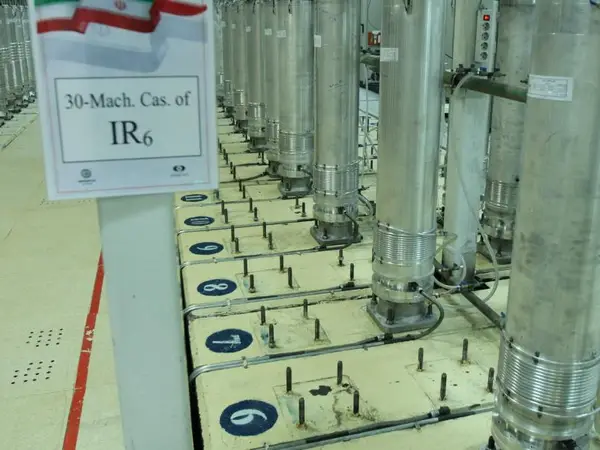Iran has told the International Atomic Energy Agency (IAEA) it will move production of crucial nuclear components from the Karaj plant to a facility at Esfahan.
The reason was not immediately clear. The IAEA said Monday it had placed seals on machines at the TESA Karaj plant and removed its cameras there as production at Karaj had "ceased."
Fars news agency reported Monday that production in the TESA Karaj plant, where Iran manufactures centrifuges, would be moved to a new “location” in Esfahan. The agency did not explain if this was part of the site where Iran converts raw uranium into feeder gases for uranium enrichment, which takes place at Ferdow and Natanz.
Fars and Reuters both reported that IAEA surveillance equipment including cameras had already been installed at the new site − Reuters dated this to January 24 – although production had not yet begun. Tehran and the IAEA have been at odds over access to monitoring equipment across the nuclear sites since early last year, when Tehran reduced its co-operation with the agency to that required by the Nuclear Non-Proliferation Treaty, and a particular dispute over Karaj was resolved only a month ago.
Under the NPT safeguards, the IAEA does not have automatic access to the manufacturing process. Under current arrangements covering nuclear sites, Iran is storing data from cameras and other monitoring equipment but has said the agency will not have access to the data until and unless the current Vienna talks agree a way to restore the 2015 nuclear deal, the JCPOA (Joint Comprehensive Plan of Action).
An IAEA report cited by Reuters said that Iran had informed the agency on January 19 that it intended to “produce centrifuge rotor tubes and bellows at a new location in Esfahan, instead of at the centrifuge component production workshop at the TESA Karaj complex, and that the Agency could adjust its surveillance and monitoring measures accordingly.”
Fars reported that Iran had not allowed the IAEA to replace equipment at Karaj, which was agreed in December, until Tehran had carried out “technical and security checks” on new cameras. Last June the site was apparently hit by a drone strike, widely attributed to Israel.
Fars noted that the movement of manufacturing took place against the background of the Vienna talks, which may resume later this week, but gave no explanation of the rationale for the shift.
